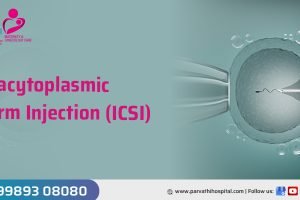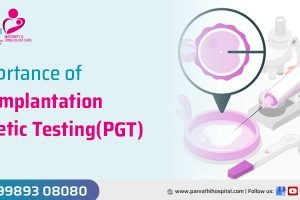A step-by-step guide on assisted reproductive technology to treat infertility

In assisted reproductive procedures, gametes or embryos are transferred to the woman’s reproductive system after being cultured in vitro using oocytes and sperm from the intending parents or donors. Multifetal pregnancy may be caused by Assisted reproductive techniques or ART; however, the risk is significantly lower than it would be with controlled ovarian stimulation. Before transfer and implantation, the embryo can frequently be examined for genetic flaws if the risk is significant.
What is infertility?
Infertility is the failure of a heterosexual human couple to conceive after engaging in repeated, unprotected sexual activity for more than a year. Numerous factors can impact either a woman’s or a man’s fertility. Primary infertility is when a couple has never conceived, while secondary infertility is when a couple has already had at least one child. The inability to have children has a devastating effect on a person’s life. Around the world, it is viewed as a personal failure. It might cause mental diseases like sadness or a personal tragedy like divorce. Infertility in men and women is quite common and can be treated with the right measures.
Causes of infertility
Numerous reasons that require correct diagnosis can contribute to infertility. But according to several studies, men are more likely than women to have infertility, and this percentage appears to be rising because of altering lifestyles. A male’s infertility may have different causes.
Reasons for infertility in men
- Reduction of sperm count or reduced motility of sperm. In healthy males, the number of sperm per milliliter ranges from 15 million to 200 million.
- Premature ejaculation and erectile dysfunction are examples of sexual disorders.
- In males, physical anomalies like a varicocele (varicose veins in the spermatic cord), absence of vas deferens, undescended testes, and infection in any male reproductive organ can induce infertility.
- Specific pathogens are becoming infected.
- Chronic illnesses like cancer, diabetes, etc.
- Adverse effects of some drugs
- Adopting unhealthy habits such as substance abuse, drug use, smoking, and alcohol
- Birth defects
- Heat or harsh chemicals exposure
Reasons for infertility in women
- Ovulation issues brought on by hormonal changes, such as PCOS, infection, or hormonal imbalance.
- Anomalies of the uterus, abnormalities in the uterus’s form, the fallopian tubes, etc.
- Uterine wall thickening due to endometriosis
- Overweight Sexually Transmitted Infections
- Exposure to chemical kinds
- Birth defects are also a reason for infertility in women
- Heat or harsh chemicals exposure
What are assisted reproductive techniques?
When people or couples have trouble getting pregnant naturally, they can use assisted reproductive techniques (ARTs), which are medical procedures or treatments. These approaches are often employed when other means of conception have failed or are impractical.
Types of assisted reproductive techniques
There are many ways infertility can be treated. If that does not work, with the help pf latest technology, a lot of methods have been developed to help a couple get pregnant. They are:
1. Gamete intrafallopian tube transfer (GIFT)
Since IVF has a higher success rate than GIFT, GIFT is a less common alternative. However, women most frequently use GIFT when they possess one of the following:
- Unaccounted-for infertility
- Endometriosis with normal tubal function
The exact number of oocytes and sperm, as in IVF, are retrieved, but they are then transferred laparoscopically or transvaginal to the distal fallopian tubes, where fertilization occurs. This occurs between 25 and 35 percent of cycles result in live births.
2. Intracytoplasmic sperm injection (ISN)
This method is helpful when:
- Other forms have failed or are likely to fail.
- There is a severe sperm disorder.
In these, oocytes are acquired similarly to IVF. Each egg receives a single sperm injection to prevent fertilization by erroneous sperm. After that, the embryo is cultivated and transferred, just like in IVF. About two-thirds of ART cycles utilize intracytoplasmic sperm injection. In couples with low oocyte production or old mother age, intracytoplasmic sperm injection has no advantage. If a woman is part of an infertile couple greater than 30 of age, these procedures must be performed to increase the likelihood of one more pregnancy. Therefore, before using intracytoplasmic sperm injection, one must weigh the associated costs and dangers.
Following intracytoplasmic sperm injection, there may be an increased risk of birth abnormalities. This could be because either the sperm, egg, or embryo may be harmed during the operation. It is possible to use sperm from males who have Y chromosomal mutations. However, male reproductive system issues are the most often reported birth abnormalities.
3. In vitro fertilization (IVF)
In IVF, sperm and eggs are fertilized in a lab environment after being removed from the ovaries. The resultant embryos are then put inside the woman’s uterus, where they can be implanted and grow into a baby. Usually, the process entails the following: Controlled stimulation of the ovaries Retrieving and fertilizing oocytes Culture of embryos Transfer of embryos Although scientists are unsure whether the higher risk is related to IVF or to variables that contribute to infertility alone, it raises the risk of birth defects may be slightly more frequent following IVF. Cells from the polar body of an egg or cells from an embryo can be used for preimplantation genetic testing. Preimplantation genetic diagnostic or preimplantation genetic screening may be used during the testing process to look for dangerous inherited illnesses and rule out aneuploidy. If test results are unavailable immediately, the blastocyst can be kept and transferred in a subsequent cycle.
4. Frozen embryo transfer (FET)
It is an IVF technique. Cryopreserved eggs from past IVF procedures have produced successful infants combined with IFT. One or more embryos may be created through IVF, but only one or two should be transplanted at once; the others can be cryopreserved. FET usually uses embryos from a previous conventional IVF treatment. Cryopreserved embryos can also be donor embryos.
There are numerous ways to boost fertility naturally. However, if none of them work for you, there will be APT’s assistance to help you concieve.
Final words
To effectively manage infertility, a thorough diagnosis of the problem is necessary. Then, depending on the cause, a different strategy is used. These include surgery, physical activity, a healthy diet, behavioral adjustments, prescription drugs, hormone therapy, and assisted reproductive technology (ART). If conventional methods cannot treat infertility, assisted reproductive technologies have been developed to solve the issue. By interfering with the ova, sperm, or embryo, it achieves this.
Frequently asked questions
There are particular requirements for being eligible for assisted reproductive procedures (ART). Depending on the specific ART technique and the fertility clinic or reproductive specialist recommendations, the criteria may differ slightly.
Age can substantially impact the success rates of assisted reproductive technology (ART) therapies, even if there are no burdensome age restrictions for receiving these treatments. This is because the amount and quality of eggs or sperm, which often drop as people age, are crucial components of ART success.
The length of the assisted reproductive technology (ART) procedure can change depending on the patient’s situation and the chosen course of treatment. In addition, it depends on factors such as the diagnostic phase, treatment planning, ovarian stimulation, embryo development, and embryo transfer.









